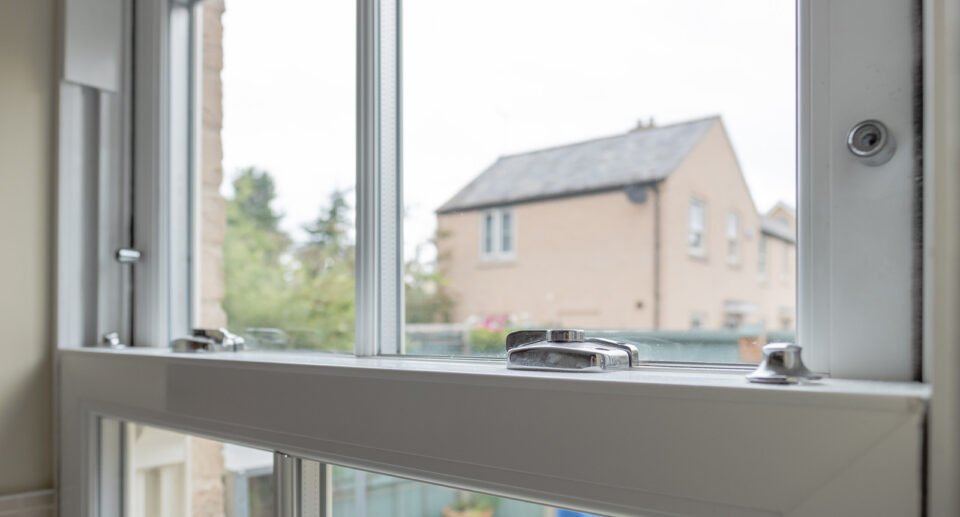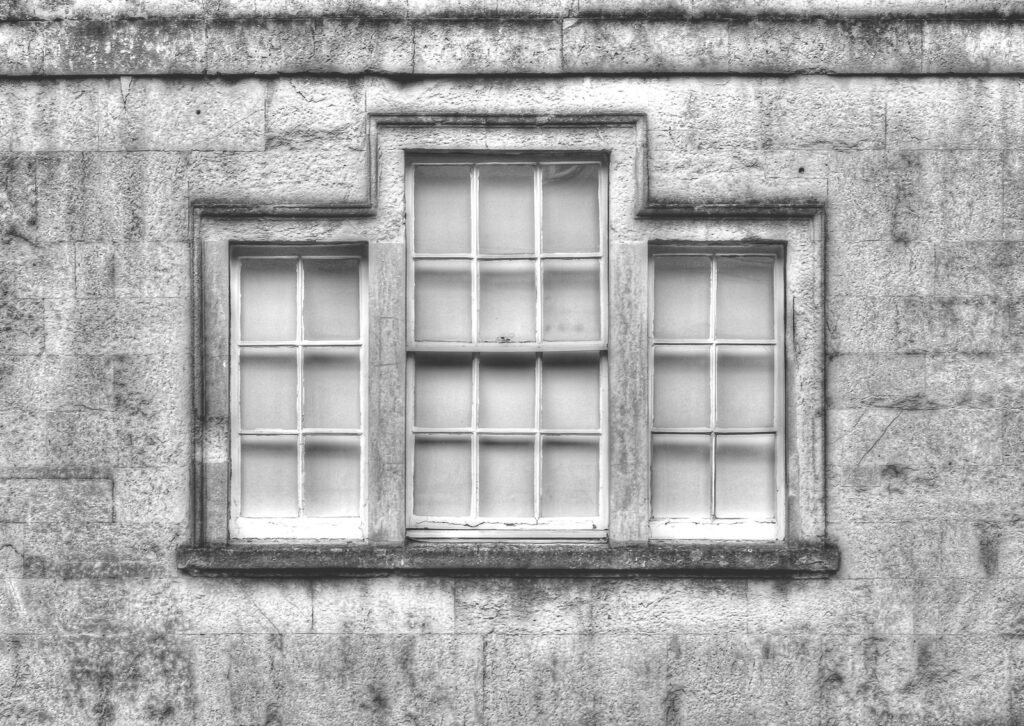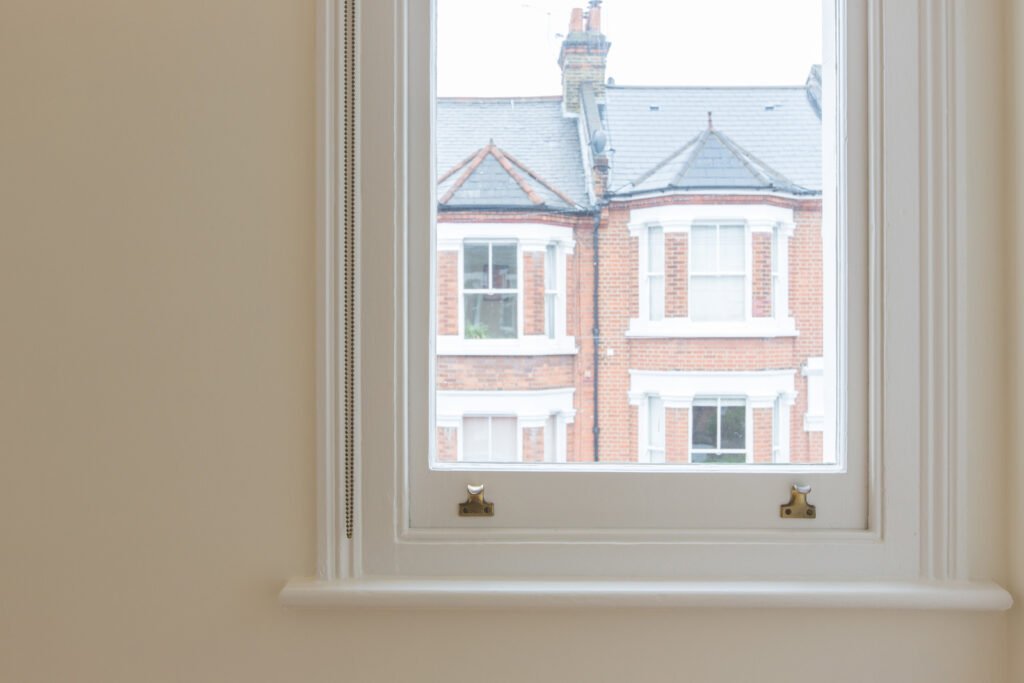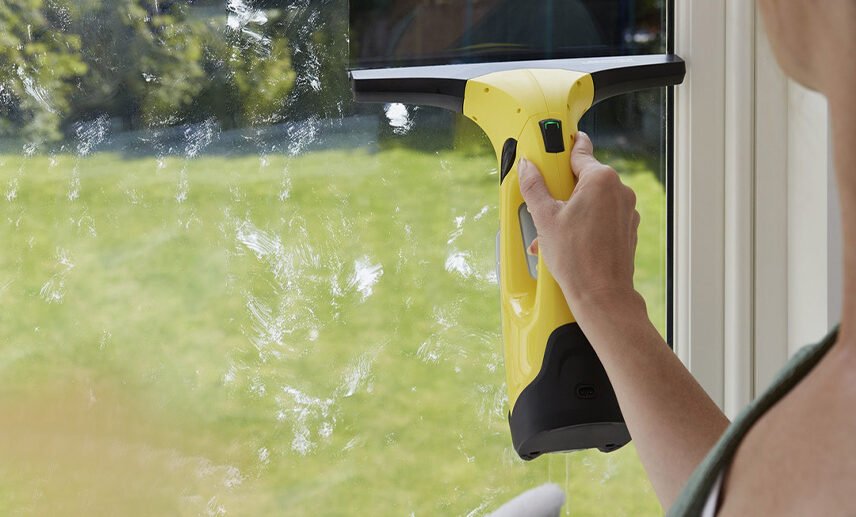What Are Sash Windows: A Comprehensive Guide

Sash windows are a traditional style of window that has played a significant role in the architectural history of many period homes in the UK. They consist of one or more movable panels, known as sashes, that hold the glass panes together and slide vertically within a frame. The design of these windows provides not only an aesthetic appeal that complements various architectural styles from Georgian and Victorian to Edwardian eras but also a practical system for ventilation.
The mechanics of a sash window utilise a counterweight system, typically involving cords and weights or a spring balance, which allows the sashes to move up and down. This traditional craftsmanship uses different materials, including wood and more modern uPVC, catering to the need for improved thermal efficiency while maintaining the classic look. With numerous advances over the years, these windows can now be equipped with double glazing, offering better insulation without compromising on the window’s authentic charm.
Key Takeaways
- Sash windows are characterised by their moving ‘sashes’ which slide vertically.
- They combine historical aesthetics with practical ventilation features.
- Modern sash windows can incorporate double glazing for enhanced thermal performance.
Historical Background

The evolution of the sash window is intrinsic to the architectural developments in period homes across the UK, marking a significant contribution to the aesthetics of conservation areas. This section will explore the historical progression of sash windows through the Georgian, Victorian, and Edwardian eras, as well as during the Regency period’s adaptations.
Georgian Era Influence
Georgian sash windows were a defining feature of architecture. Homeowners of the time favoured the symmetrical design, and sash windows became prominent features in Georgian homes. What characterises Georgian sash windows are the six-over-six panel designs, often crafted with fine glazing bars that held the glass panes. The windows were constructed to allow for ample natural light in spacious interiors, aligning with Georgian principles of proportion and elegance.
Victorian and Edwardian Developments
As architectural styles transitioned into the Victorian era, sash windows saw the introduction of two-over-two panels, which were larger due to advancements in glass technology. The Victorian sash windows typically featured heavier and more ornate frames to complement the Gothic revival aesthetics. Moving forward into the Edwardian period, windows often became wider and incorporated a six-over-two panel design, with the upper sash decorated with stained glass or latticework, distinctive of Edwardian houses that were designed with more eclectic influences.
You might also like – Window Vacuum: The Ultimate Guide for Sparkling Windows
Regency and Later Adaptations
The Regency period brought about unique adaptations in sash window designs, introducing margin lights and curved or bowed sashes. Architectural refinement during this period led to sash windows that were less cumbersome and more graceful, yet still adhering to the classical values of the time. Homes in conservation areas today often retain the original Regency sash windows, highlighting their lasting appeal and the importance of these features in period home conservation.
Design and Mechanics
Sash windows, traditional in design, utilise a unique combination of simplicity and ingenuity in their mechanisms. They have been an enduring feature of architectural design for centuries, particularly noted for their classic elegance and functional mechanics.
Defining Sash Windows

A sash window typically consists of one or more movable panels, known as sashes, that form a frame to hold panes of glass. These panes are usually separated by glazing bars, creating the iconic grid pattern often seen in historical buildings.
Operating Mechanisms
Sash windows operate on a straightforward principle where weights or spring balances are used as a counterweight to facilitate the movement of the sash. These components are often hidden within the window frame, with the sash cord or chain connecting the sash to the counterweight through a system of pulleys. This design allows for smooth opening and closing.
Window Composition
Each sash within the window is a separate unit of framed glass panes. The traditional box sash window has a discreet compartment (the box) to conceal the weights and pulleys that allow the sash to move. More modern versions may use a spring balance instead, which is a more streamlined mechanism.
Styles and Variations
Sash windows appear in several styles: the classic single-hung and double-hung windows. Single-hung varieties involve a single movable lower sash, whereas in double-hung windows, both the upper and lower sashes can be moved. They differ from the more common casement windows where the panes are hinged on the side so not categorised as a sash window. Sash windows can also come in varying designs, from the traditional to more contemporary looks, adapting the window styles to suit different architectural needs.
Materials and Construction
The construction of sash windows incorporates various materials and glazing options, tailored to enhance both functionality and aesthetic appeal.
Timber Sash Windows

Timber remains the preferred material for traditional sash window construction given its durability and classic appearance. High-quality timber such as oak and mahogany is commonly used, recognised for its robustness and the ease with which it can be shaped and carved. Timber frame installations demand skilled craftsmanship, ensuring the sash window’s integrity and performance.
- Materials: Oak, mahogany
- Features: Durable, aesthetically pleasing
UPVC and Alternative Materials
UPVC sash windows have emerged as a cost-effective and low-maintenance alternative to wood. UPVC provides excellent thermal insulation and can mimic the visual qualities of timber. Aluminium sash windows are another alternative, known for their strength and longevity, although less common.
- UPVC: Affordable, thermally insulating
- Aluminum: Strong, durable
Glazing Options
Glazing technology has advanced to include options from single-glazed to double-glazing systems. Double-glazing offers superior thermal insulation and soundproofing compared to single glazed. Bespoke glazing options may also be included for custom needs.
- Single-glazed: Basic insulation, more historically accurate
- Double-glazed: Enhanced insulation, noise reduction
Craftsmanship and Customisation
The construction of sash windows involves meticulous craftsmanship, particularly in custom installations. Bespoke sash windows can accommodate a variety of styles, finishes, and thermal requirements, highlighting the flexibility in sash window design and function.
- Bespoke Designs: Tailored to specific aesthetic and functional needs
- Craftsmanship: Essential for both traditional timber and modern UPVC windows
Practical Considerations
When assessing sash windows, one must consider their performance in terms of energy efficiency, sound insulation, and ventilation capabilities, as well as their longevity and security features. These factors collectively influence the overall value and desirability of sash windows for property owners.
Energy Efficiency and Insulation
Sash windows have historically been viewed as less energy efficient due to potential draughts. However, modern advancements mean that double-glazed sash windows offer significantly improved insulation. This contributes to reduced heat loss and can result in lower heating bills. It is important to ensure that these windows are properly sealed and maintained to maximise their energy efficiency.
Acoustic Properties and Ventilation
Ventilation is a strong advantage of sash windows, as they allow for adjustable and controlled airflow, which can help to regulate indoor temperatures and reduce condensation. In terms of acoustic properties, the design and quality of materials used can affect the level of sound insulation provided. Properly fitted sash windows can offer a reduction in external noise, contributing to a quieter indoor environment.
Maintenance and Durability
The durability of sash windows often hinges on regular maintenance. Traditional wooden sashes can require more frequent maintenance to prevent rot and decay. Modern materials such as uPVC or treated wood can offer low maintenance solutions without compromising the traditional aesthetics. Repairs, when needed, should be carried out by professionals to ensure longevity.
Security Features
Security is an important consideration, and sash windows can be fitted with various security features, such as sash stops and reinforced glass. These additions serve to enhance the worth of the windows by making forced entry more challenging. Homeowners should weigh the value of these security features against any additional expenses involved.
Aesthetic and Architectural Impact
Sash windows are renowned for their elegance and the distinct aesthetic they add to homes, particularly in historical and conservation areas. Their design has a significant influence on the appearance of properties, balancing functionality with style.
Enhancing Home Aesthetics
Sash windows are identifiable by their paned glass sections and vertically sliding frames, contributing to a clean and refined appearance. They have long been associated with traditional elegance, incorporating multiple small panes held by glazing bars. The vertical sliding mechanism is not just a functional element; it offers a unique aesthetic that many homeowners find appealing. Their design allows for easy cleaning and maintenance, ensuring a pristine appearance over time.
Compatibility with Property Types
The versatility of sash windows allows them to blend seamlessly into a variety of property styles, from classic Victorian homes to modern residences. They are particularly prevalent in listed buildings and conservation areas, where maintaining architectural integrity is paramount. Sash windows can enhance a property’s facade by preserving the historical character that many seek to retain.
- Listed Building: Integral for maintaining historical authenticity.
- Modern Homes: Adds a touch of classic design to contemporary aesthetics.
Customisation and Colour Choices
Customisation is a key aspect of sash windows, offering homeowners the ability to tailor their windows to specific design needs. This includes various colour choices, with traditional white being a timeless option, while bold colours can provide a contemporary edge. The flexibility in painting and finishing allows sash windows to be adapted to personal preferences and the existing colour palette of the building.
- Preferred Finishes: Painted, classic white upvc or woodgrain coloured finishes
- Colour Choices: Wide range from classic whites to bespoke hues, enhancing the window’s appeal while complying with any relevant regulations for historic properties.
By considering these factors, sash windows contribute significantly to both the aesthetic appeal and architectural character of properties across the UK.
Upgrading and Replacement
When homeowners seek to preserve the charm of their traditional sash windows while enhancing performance, addressing common issues such as wear, draftiness, and energy inefficiency is paramount. Upgrading and replacement involve detailed work to ensure the windows maintain their original aesthetic while meeting modern standards of functionality.
Dealing with Common Issues
Rot and Swelling: These are frequent problems in sash windows, often affecting the sill and the bottom of the window frame. Rot can be treated and filled, whereas swelling, caused by moisture, requires sanding down or replacement if severe.
- Drafts: Weather-stripping or draught-proofing is used to seal gaps and reduce airflow, improving energy efficiency.
- Sash cords and pulleys: Experiencing wear over time, these components should be inspected and replaced if frayed or broken to maintain smooth operation.
Replacing Windows and Frames
The costs involved in replacement can vary greatly, with factors such as the extent of damage, materials chosen, and the property’s historical value influencing prices. A homeowner might spend from £620 to £920 on average for refurbishment, with sill replacement often costing around £240 per window.
- Replacement Process: If damage is beyond repair, complete replacement may be necessary. This includes the sash, grooves, and track, ensuring the new window operates efficiently and safely.
- Material Considerations: Authenticity in materials can affect cost and longevity. Softwoods are less expensive but may be less durable than hardwoods or composite materials.
Retrofitting Sash Windows
Retrofitting involves updating the original window frames with new, energy-efficient glass or incorporating draught-proofing systems while retaining existing sashes. This process is a cost-effective alternative to full replacement and beneficial for homeowners wanting to retain their home’s traditional appearance.
- Glazing Options: Double glazing can be fitted into existing frames to reduce heat loss, though this requires sufficient depth in the frame to accommodate the thicker glass unit.
Sealing Techniques: Seals can be embedded into the grooves of the window to eliminate drafts and improve thermal performance without altering the window’s appearance.
Frequently Asked Questions
In this section, readers will find answers to common queries regarding the materials, mechanisms, and characteristics of sash windows, as well as their benefits and historical evolution within architecture.
What materials are traditionally used in the construction of sash windows?
Traditionally, sash windows are constructed from timber due to its excellent durability and classic aesthetic appeal. Timber frames are often paired with single glazing, but more recent renovations might include double glazing for improved insulation.
How does the mechanism of modern sash windows differ from traditional designs?
Modern sash windows often incorporate spring balances instead of the classic weights and pulleys system, which simplifies the mechanism and reduces the space required within the window frame. These improvements make them more adaptable to varying architectural styles and reduce maintenance.
What are the distinctive characteristics that differentiate sash windows from casement windows?
Sash windows consist of one or more movable panels, known as sashes, that slide vertically to open and close, whereas casement windows are hinged on one side and swing outwards or inwards. Sash windows are also distinctive for their grid-like appearance, formed by the glazing bars.
What are the benefits of installing aluminium sash windows in a home?
Aluminium sash windows offer high durability, minimal maintenance, and improved energy efficiency. They are resistant to warping, rotting, and fading, which makes them an excellent choice for homeowners seeking long-term performance and modern aesthetics.
How has the use of sash windows evolved over time, and are they still popular in modern architecture?
Sash windows have evolved from being a staple of Georgian and Victorian architecture to being appreciated for their timeless design in modern buildings. Their evolution includes the integration of advanced materials and glazing technologies, with a continued presence in contemporary architecture due to their classic style and practicality.

Hello, I’m Keith Jones. I’m the author and head of content here of door and window guide. I’ve been in the window and door industry for over 10 years in the UK and North America. I’ve had quite a few roles during my career mainly in Worldwide sales. I’m now semi retired so I thought I’d put my knowledge to good use educating people about all they might need to know about door and window related topics.






